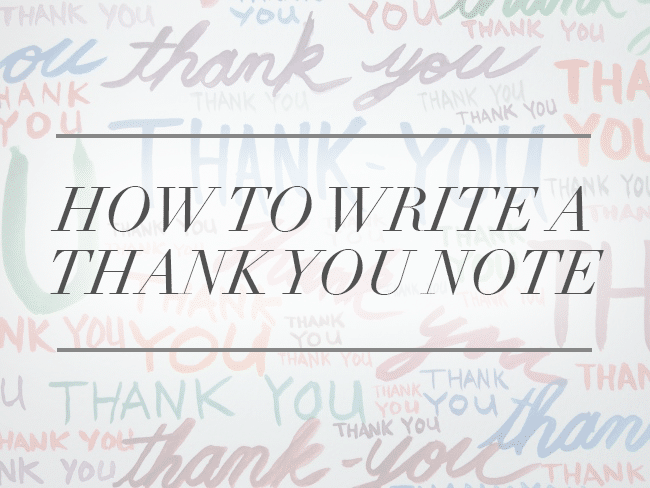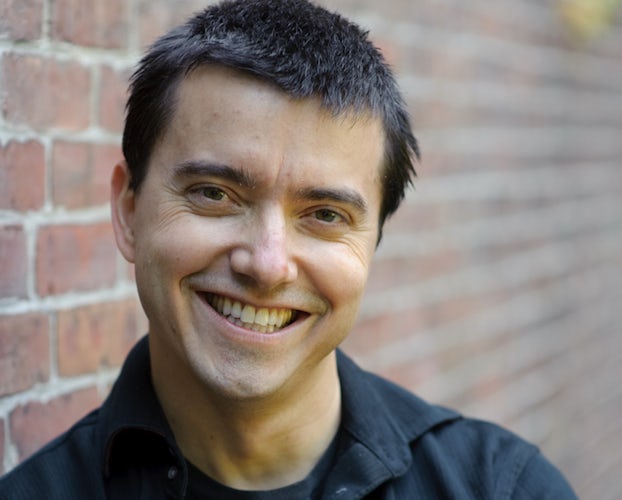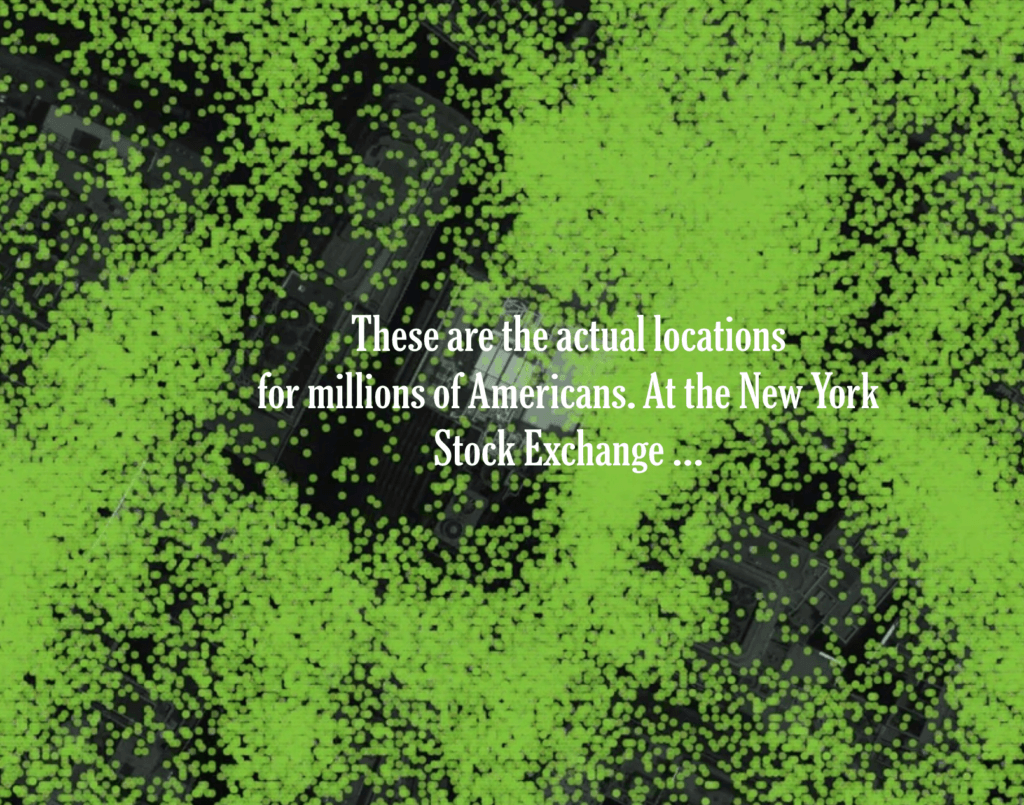[youtube https://www.youtube.com/watch?v=d8_m8-Gmuf8&w=640&h=360]
Become A Full-Time Writer
Brad Johnson is an author and blogger who helps writers discover their niche, build successful habits, and quit their 9-5. His books include Ignite Your Beacon, Writing Clout and Tomes Of A Healing Heart. For strategic content and practical tips on how to become a full-time writer, visit: BradleyJohnsonProductions.com.
[youtube https://www.youtube.com/watch?v=d8_m8-Gmuf8&w=640&h=360]
http://feedproxy.google.com/~r/TheWritePractice/~3/lc-DVI5M0-U/
Handwritten notes are like sending a hug through the mail. They have personality and character, attributes a computer screen will never have. Let me show you why, when, and how to write a thank-you note.

Need some quick advice? Here are the nine steps to write a thank-you note. Read on for a thorough guide!
Those are the quick steps. Now read on for a longer guide.
It is easier and quicker to send a text message, an email, or a voice message to say “thank you.” However, if the purpose of the thank-you message is to convey your deepest, most sincere gratitude, taking the time to carefully write a message by your own hand, and not your secretary’s hand, will mean more to the recipient than an instant media message.
When was the last time you wrote a thank-you note? A real thank-you note on a piece of paper that goes into an envelope with an address written on it and a stamp stuck in the upper right-hand corner?
Too long, right?! Let’s write one together today.
The key word is brief. We are not talking about the changes in currency prices or the bird call of a painted bunting here. If you want to write about your summer activities or about how many litter boxes you have, write a letter instead.
Joe Bunting wrote an article about writing letters, which you can read here: What Letter Writing Can Teach Us. But a thank-you note is not a full letter.
There is simply nothing as personal as a handwritten note. In a stack of bills and flyers, it’s a treasure in a sealed packet, full of promise and potential. —Dan Post Senning
Before you begin, make sure you have all of the following on hand:
Writing a thank-you note might sound intimidating, but it is actually quite simple when you follow these nine steps.
What is nice? Hmmm . . . a standard piece of printer paper, eight and a half by eleven, and an envelope are nice and acceptable. Personal stationery or a plain set of notecards is also nice.
What is not nice paper? A piece of paper ripped out of a notebook with a coffee stain on it, the back of your grocery list, or the back of a power bill would not be considered nice stationery.
Your best choice is one with ink that doesn’t bleed or smear.
Check the spelling of the person’s name. If Margaret wants to be called Margaret, don’t call her Maggie. At least Maggie is not named after a non-stick spray like my name.
If you are on a first-name basis, call the person by their first name. If you don’t know the person very well, or they are “The Big Cheese” in a company, use Mr., Ms., or use the full name.
Keep the salutation polite and friendly. “Yoh” or “Hey” or “What’s up?” might work with your college roommate, but it is a bit casual for a business or professional thank you note. And don’t “Hey” your great aunt. Address the card “Dear Aunt Margaret,” not “What’s up, Maggie?”
Sigh, I am being a bit bossy. Who am I to tell you what to call your Aunt Margaret?
Only you know your relationship with your dear aunt. Please address the card in the same manner you talk to her. Which I hope is always polite and respectable.
And say what you are thankful for. Be specific.
Thank you for the beautiful sweater. Thank you for introducing me to your editor. Thank you for being the best friend I had in grade school. Thank you for being the best mommy in the world. Thank you for cleaning my seven litter boxes. (I can dream. Right?)
Thank them for their gift of ten kittens, or tell them how much their act of kindness meant to you. This sentence makes the note more personal.
For example, tell them you are looking forward to seeing them the next time you are in New Orleans. Or tell them how you wished you lived closer so you could help them shovel their driveway.
These are all polite and not too informal. “Chow baby” is too informal, and “chow” is actually spelled “ciao.” Don’t use the word “love” unless you actually love the person. Signing an email “xo” might give the recipient the wrong idea.
Use legible handwriting. This is not a prescription; it is a thank you card.
Remember, this is not a letter, it is a note. Please put your return address on the envelope. Write clearly.
//platform.twitter.com/widgets.js
Not sure when a thank-you note is appropriate? Here are six times to send a thank-you note:
Whether the present comes in the mail or in person, remember to send a thank you note in response.
If someone helps you connect with someone new, send them a thank you note to show your appreciation for their kindness.
Yes, send a handwritten thank-you note after a job interview. The handwritten note will help you stand out in a mass of interviewees.
However, according to an article by Molly Triffin on Interview Etiquette in Forbes, you should send a thank-you email to everyone you met in the interview process within twenty-four hours. Managers make quick decisions, and your written note might arrive after they have already made a hiring decision.
So, I suggest do both. Send a handwritten note and an email.
When your mother comes and helps you pack up your house when you move from Minnesota to California. And then again five years later when you move from California to Pennsylvania.
Yes, even thank your mother. May no kindness go unthanked.
When someone comes and cleans all your seven litter boxes without being asked. That hasn’t happened yet. But if it does, I will mail a handwritten note.
Send a thank-you note to a dear friend because you want them to know how much their friendship means to you. You realize life is precious, and you don’t want to get hit by a bus and not have them know you valued the friendship.
There are six unbreakable rules when writing thank-you notes:
1. Don’t ask for anything.
Never, never, never in ten million years ask for something at the end of a thank-you note.
Thank you, and, oh by the way, can you do this for me _______________. This is a big NO will a capital N and a capital O. Here is an example of what not to do.
Dear Mr. Faraday,
Thank you for introducing me to the President of your company. I appreciate your kindness in helping me meet Mr. Wise Sage.
I have enclosed a copy of my manuscript. Will you please read it for me and give it to the editor in charge of acquisitions?
Sincerely,
Pat Asksfortoomuch
2. Don’t tell the person you hated the gift and want to return it.
3. Don’t send a printed form letter with your signature printed at the bottom.
4. Don’t have your secretary write your thank-you cards for you and then you sign the note. I don’t care if you are the President of the Company. Write your own notes. The only way you can get out of this is if you don’t have hands.
5. If you spell a word wrong, don’t cross it out and keep writing. Get a new card and start again.
6. My husband said, “Don’t use profanity.”
Do you write thank-you notes? How do you feel when you receive one? Please tell me in the comments. I always love to hear from you.
For today’s practice, take fifteen minutes to write a thank-you note. Get a notecard, or a piece of paper and write a thank-you note. Then put it in an envelope and mail it.
You don’t have to share the contents of your thank-you note here, as it might be personal, but please share that you wrote the note.
If no one has given you a gift in a box with paper and a bow, think of someone who has given you their time, has offered advice, or has supported you with encouragement, then write them a thank-you note.
xo
Pamela
The post How to Write a Thank You Note (a Real One) appeared first on The Write Practice.
https://econsultancy.com/a-day-in-the-life-of-pierre-loic-assayag-ceo-co-founder-traackr/
Pierre-Loic Assayag is CEO & Co-founder at Traackr, an influencer marketing platform.
We caught up with him to find out why he calls himself a “recovering marketer” and what advice he would give to those starting out.
As a self-professed “recovering marketer”, I consider it my passion and job to help marketing evolve from an automated, programmatic model to one that acknowledges the voice of the consumer based on cultivating valuable relationships and that willingly trades control of the creative process for business impact.
My job today is to continue building Traackr to be the strategic partners to brands who are investing strategically in influencer marketing and need technology and expertise to realize their ambitions.

As CEO, my remit is to ensure our employees, customers and investors thrive.
As the CEO of a growing technology company in an emerging category, I need to be half philosopher, half navy seal: find the presence of mind to anticipate and affect the evolution of the market to make sure our business is prepared to lead the way, meanwhile, be decisive on key levers for Traackr to push or pull.
There is a typical day on-the-road and a typical day at our San Francisco office where I am based. When I am in California, my days start at 5AM and I spend the first five hours maximizing my time with our customers and team based in Europe. Late mornings are for NYC. I’m an advocate for walking meetings, so a great day includes getting in 10,000 steps while brainstorming with my team.
One of our hiring principles is to “hire up”, to always find people that raise the bar and make us smarter. The best part of my job is when I see people on my team bringing an idea to life or enhancing something we do and thinking that they did a better job than I ever could at it.
I have an unusual ability to simplify complex situations and problems to focus on their essence. The worst part of my job (and life in general) is when I have to spend time and energy dealing with issues that shouldn’t exist to begin with.
This is an interesting question given that we are all in the midst of 2020 planning… My goal is to make Traackr the indispensable platform to companies embracing the notion of people-powered marketing whether they were born in it or have migrated to it. The way I measure success is our market share within the segment described above.
I’ve learned a lot from the software engineering industry, including how to run effective meetings and manage complex projects. For example, we’ve adopted the concept of “retrospectives” for managing our Leadership Team initiatives.
I’m also a huge fan of Trello, which I discovered from our product team. Today, we use it across the organization and I personally organize my priorities with it. It’s the one “to-do management” system that I’ve stuck with over the years.
I started my career in marketing for Procter & Gamble and Peugeot in Europe, before immigrating to the United States from France, by way of the UK and Spain. Today, I refer to myself as a “recovering marketer” because when I started out in marketing it was during the time of traditional marketing, referred to as the “art of persuasion,” which never made sense to me. It always felt that the one-way marketing success was due to a lack of alternatives.
When my cofounder, David Chancogne and I set out to build Traackr 10 years ago, we saw an opportunity to organize the web, not by pages, but by people. That premise is what created the foundation for Traackr, which today powers influencer marketing for top brands around the world who are passionate about staying relevant to their consumers.
After Traackr, I want to solve the problem of fake news.
I’m very impressed by companies who are living their brand values and striving to be as authentic as possible. Notable examples of this include Nike’s work with Colin Kaepernick and Calvin Klein’s support of the LGBTQ community. These are two cases where the brands have connected a sense of purpose to their business in a way that meaningfully impacts their community.
The brands that are winning and will continue to win are the ones who put people at the heart of their marketing. The age of persuasion is over. To succeed as a marketer today you need to cultivate your sense of empathy and learn how to translate brand purpose into meaningful programs.
Take Econsultancy’s Fast Track Influencer Marketing training course
The post A day in the life of… Pierre-Loic Assayag, CEO & Co-founder, Traackr appeared first on Econsultancy.
http://feedproxy.google.com/~r/markgrow/~3/pNIRiDYjCRI/

In 2016, you likely heard the lurid tale of Target revealing a man’s high-school-aged daughter was pregnant. Target’s algorithm had noted her Guest ID number making common first trimester purchases and began sending automated maternity ads to the family’s mailbox … All before she’d had a chance to break the news to her parents.
Something like this micro-targeting example reveals the arrogant disregard for our privacy, but it seems like nothing has yet shocked America into revolt … in fact, the situation just keeps getting worse. Instead of respecting customers, marketers have just become better at concealing the deception. Andrew Cole, a Target company statistician, told The New York Times:
If we send someone a catalog and say, ‘Congratulations on your first child!’ and they’ve never told us they’re pregnant, that’s going to make some people uncomfortable… We are very conservative about compliance with all privacy laws. But even if you’re following the law, you can do things where people get queasy.
The California Consumer Privacy Act (CCPA), an attempt to replicate Europe’s GDPR privacy standards, comes into effect on January 1, 2020. However, even when these new, more stringent, standards start, the average consumer will remain unaware of how little privacy she retains.
The New York Times recently obtained access to an enormous file of cellphone location data.
A whistleblower delivered this data — 50 million data points — without associated names, ages, genders, or other information that would overtly identify cell phone owners, even though anyone who had purchased the dataset would likely have some or all of this information.

Even without knowing identities, the reporters were able to track individuals by their movement during average commutes or by attending events from late 2016 to early 2017. The reporters were easily able to identify celebrities who had entered the Playboy Mansion or the home of Johnny Depp. Of more concern, they could also follow White House staff members, intelligence officers employed at the Pentagon, and DC riot police.
Even worse, they could track executives and celebrities visiting drug treatment facilities, abortion clinics, and massage parlors.
This data is available to anyone with a devious knack for digital breaking and entering.
By now it should be obvious that it takes very little data to make a positive ID on a person … and this is data that is becoming more freely available and commonly breached. One study showed that information easily gathered by the US Census — birthdate, zip code, and gender — would be enough to identify 87 percent of Americans.
I recently received a phone call today that I’m almost positive was actually from my healthcare provider, but because I didn’t recognize the phone number, I refused to provide my zip code and date of birth to confirm my identity.
I could nearly hear the caller rolling her eyes, but my concerns are legitimate. My healthcare provider should not solicit information along these lines, and I’m disappointed with them for their ignorance.
While going off the grid is not an option for social media marketers, it doesn’t mean that we can’t protect ourselves.
First, there’s the small stuff.
If you enjoyed this article, I’d like to leave you with a puzzle: given the current capabilities for technology to identify an author through word choice, how many tweets from an anonymous account do you think would be necessary to identify someone? I have my estimate, and I’d love to compare notes! (Assume all tweets are at the modern 280-character length)
 Kiki Schirr is a freelance marketer who enjoys absorbing new trends within the tech scene. She switched to an iPhone early this year, even though she suspected her privacy concerns were paranoia. Now she’s less certain. Kiki is most easily reached via Twitter.
Kiki Schirr is a freelance marketer who enjoys absorbing new trends within the tech scene. She switched to an iPhone early this year, even though she suspected her privacy concerns were paranoia. Now she’s less certain. Kiki is most easily reached via Twitter.
The post The ultimate privacy betrayal: Your smartphone is cheating on you appeared first on Schaefer Marketing Solutions: We Help Businesses {grow}.
https://econsultancy.com/a-day-in-the-life-of-pierre-loic-assayag-ceo-co-founder-traackr/
Pierre-Loic Assayag is CEO & Co-founder at Traackr, an influencer marketing platform.
We caught up with him to find out why he calls himself a “recovering marketer” and what advice he would give to those starting out.
As a self-professed “recovering marketer”, I consider it my passion and job to help marketing evolve from an automated, programmatic model to one that acknowledges the voice of the consumer based on cultivating valuable relationships and that willingly trades control of the creative process for business impact.
My job today is to continue building Traackr to be the strategic partners to brands who are investing strategically in influencer marketing and need technology and expertise to realize their ambitions.

As CEO, my remit is to ensure our employees, customers and investors thrive.
As the CEO of a growing technology company in an emerging category, I need to be half philosopher, half navy seal: find the presence of mind to anticipate and affect the evolution of the market to make sure our business is prepared to lead the way, meanwhile, be decisive on key levers for Traackr to push or pull.
There is a typical day on-the-road and a typical day at our San Francisco office where I am based. When I am in California, my days start at 5AM and I spend the first five hours maximizing my time with our customers and team based in Europe. Late mornings are for NYC. I’m an advocate for walking meetings, so a great day includes getting in 10,000 steps while brainstorming with my team.
One of our hiring principles is to “hire up”, to always find people that raise the bar and make us smarter. The best part of my job is when I see people on my team bringing an idea to life or enhancing something we do and thinking that they did a better job than I ever could at it.
I have an unusual ability to simplify complex situations and problems to focus on their essence. The worst part of my job (and life in general) is when I have to spend time and energy dealing with issues that shouldn’t exist to begin with.
This is an interesting question given that we are all in the midst of 2020 planning… My goal is to make Traackr the indispensable platform to companies embracing the notion of people-powered marketing whether they were born in it or have migrated to it. The way I measure success is our market share within the segment described above.
I’ve learned a lot from the software engineering industry, including how to run effective meetings and manage complex projects. For example, we’ve adopted the concept of “retrospectives” for managing our Leadership Team initiatives.
I’m also a huge fan of Trello, which I discovered from our product team. Today, we use it across the organization and I personally organize my priorities with it. It’s the one “to-do management” system that I’ve stuck with over the years.
I started my career in marketing for Procter & Gamble and Peugeot in Europe, before immigrating to the United States from France, by way of the UK and Spain. Today, I refer to myself as a “recovering marketer” because when I started out in marketing it was during the time of traditional marketing, referred to as the “art of persuasion,” which never made sense to me. It always felt that the one-way marketing success was due to a lack of alternatives.
When my cofounder, David Chancogne and I set out to build Traackr 10 years ago, we saw an opportunity to organize the web, not by pages, but by people. That premise is what created the foundation for Traackr, which today powers influencer marketing for top brands around the world who are passionate about staying relevant to their consumers.
After Traackr, I want to solve the problem of fake news.
I’m very impressed by companies who are living their brand values and striving to be as authentic as possible. Notable examples of this include Nike’s work with Colin Kaepernick and Calvin Klein’s support of the LGBTQ community. These are two cases where the brands have connected a sense of purpose to their business in a way that meaningfully impacts their community.
The brands that are winning and will continue to win are the ones who put people at the heart of their marketing. The age of persuasion is over. To succeed as a marketer today you need to cultivate your sense of empathy and learn how to translate brand purpose into meaningful programs.
Take Econsultancy’s Fast Track Influencer Marketing training course
The post A day in the life of… Pierre-Loic Assayag, CEO & Co-founder, Traackr appeared first on Econsultancy.